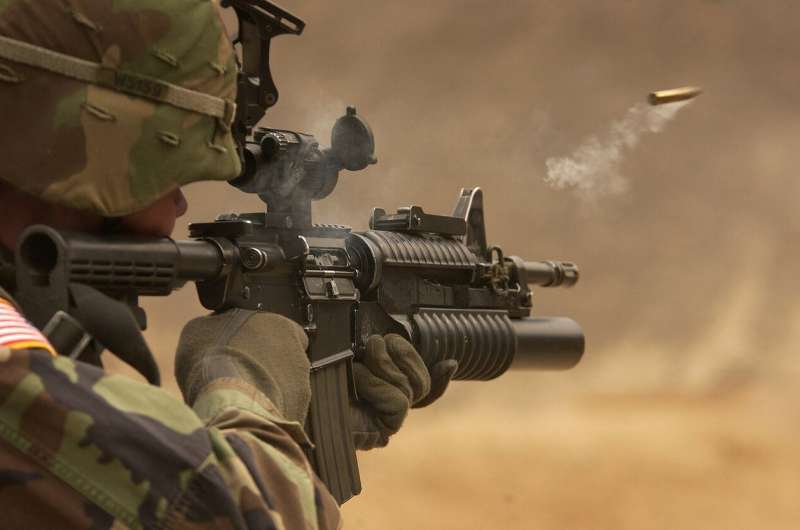Analysis: Post-9/11 wars may have killed twice as many Americans at home as in battle

An analysis by a Vanderbilt economist whose research focuses on fatality risks finds that the post-9/11 wars may have resulted in more than twice as many indirect deaths back home as were lost in battle. These indirect deaths are due to the diversion of war costs from the U.S. economy and the subsequent impact on the nation's health.
"The Mortality Cost Metric for the Costs of War," by W. Kip Viscusi, University Distinguished Professor of Law, Economics, and Management at Vanderbilt University and co-director of the Ph.D. Program in Law and Economics, appears in Peace Economics, Peace Science and Public Policy.
"When a government spends $100 million on a war, it leaves its citizens $100 million poorer," Viscusi said. "We know that during a recession, more people die. People have less money to spend on better nutrition, health care, safer products or living in a safer neighborhood. For much the same reason, war spending would have a similar effect by redirecting those dollars away from consumers."
To examine the question, Viscusi first had to work out the total cost of war. The U.S. government estimates that the post-9/11 wars, which include military operations in other countries such as Syria and Pakistan in addition to Afghanistan and Iraq, have cost about $1.95 trillion. But, Viscusi said, those are just expenditures. To tell the whole story, you need to include the value of the lives lost in battle.
And in fact, a dollar value for these lives does exist—Viscusi invented it, and the government already uses it in its risk calculations. It's called the "value of statistical life," and it's the average amount you would have to pay a group of 10,000 people to increase their risk of certain death from zero to one. It's based on the hazard pay workers receive for dangerous jobs, and in the United States, at the height of the Iraq and Afghanistan wars, the VSL was about $8.9 million. (Today it's about $10 million.)
By multiplying the number of direct U.S. fatalities in the post-9/11 conflicts—10,371, by conservative government estimates—by the VSL, $8.9 million, Viscusi calculates that these war deaths are worth an additional $95.3 billion, bringing the total cost of these wars to $2.05 trillion.
War expenditures have an additional impact that causes deaths, Viscusi said, because money spent on war is diverted away from the U.S. economy, including everyday spending on well-being. In previous research, Viscusi has found that Americans spend about 10 cents out of every dollar on health and safety. His analysis shows that dividing the VSL by $0.10 results in what Viscusi calls the "mortality opportunity cost of expenditures." That is, for every $89 million that we've spent on the post-9/11 wars, we would expect to see one additional, indirect death here at home.
This results in an additional 21,910 indirect deaths since 9/11 due to the diversion of war costs away from U.S. households, bringing the total toll to 32,619—more than three times the official government estimate.
"Every time we spend money on wars, we're not spending that money on other things. There are actual costs to society," Viscusi said. "So we have to ask ourselves, what are we losing because of that?"
More information: W. Kip Viscusi. The Mortality Cost Metric for the Costs of War, Peace Economics, Peace Science and Public Policy (2019). DOI: 10.1515/peps-2019-0004
Provided by Vanderbilt University



















